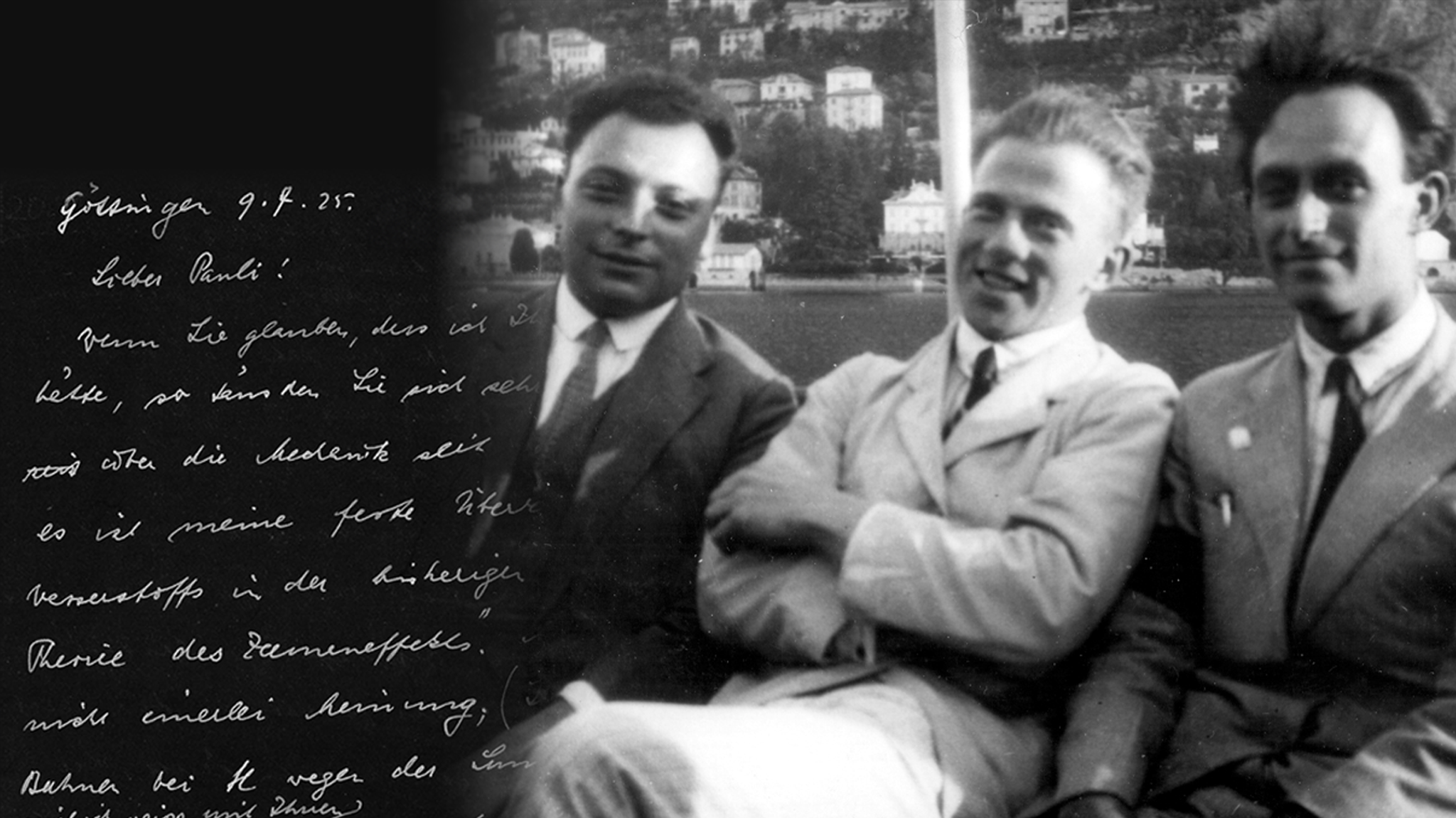
Left: The first lines of the letter sent by Werner Heisenberg to Wolfgang Pauli on 9 July 1925, explaining his efforts to interpret quantum physics differently. (Copyright: Heisenberg Society) Right: Wolfgang Pauli, Werner Heisenberg and Enrico Fermi take a break by Lake Como during the 1927 International Congress of Physicists, where the new quantum mechanics was discussed in depth. (Image: Wolfgang Pauli Archive, CERN)
Just 100 years ago, on 9 July 1925, Werner Heisenberg wrote a letter to his friend, colleague and fiercest critic, Wolfgang Pauli. A few weeks earlier, Heisenberg had returned from the North Sea outpost of Helgoland, where he had laid the foundations of modern quantum mechanics and changed our understanding of the atomic world. The letter, preserved in the Wolfgang Pauli Archive at CERN, reveals Heisenberg's efforts to liberate physics from the semi-classical picture of atoms as planetary systems, with electrons in orbit around the nucleus.
"All of my pitiful efforts are directed at completely killing off the concept of orbits - which, after all, cannot be observed-and replacing it with something more suitable," he explains in his letter to Pauli.
By sweeping away the old interpretation, Heisenberg could focus on building a more coherent model, based purely on what the experiments were observing. Attached to the letter was the draft of Heisenberg's famous Umdeutung paper, which was received for publication a few weeks later, and which is often considered as the birth certificate of modern quantum theory. In the following months, Max Born, Pascual Jordan and Wolfgang Pauli himself helped turn Heisenberg's work into matrix mechanics, the first mature formulation of quantum theory.
Today, those early reflections underlie the most precise framework in the history of science: the Standard Model of particle physics. Experiments at CERN keep pushing it to extreme regimes, and time and again, it proves astonishingly accurate.
To celebrate 100 years of quantum mechanics, the CERN Courier looks back at the impact of this theory and examines how it keeps delivering new puzzles, experimental ideas and technologies. For instance, quantum sensors may soon extend their reach from low- to high-energy applications, while quantum simulations could help overcome the limits of classical computing in describing extreme environments and complex systems.
Theoretical and philosophical considerations, too, are far from exhausted. Despite its empirical power, there is still no consensus about quantum theory's true meaning. What guides the emergence of our classical world? Is the wavefunction a real entity, a representation of the observer's knowledge or an artifact we should abandon altogether? Should we think of measurement apparatus and observers as quantum objects?
Heisenberg himself was cautious yet hopeful, writing to Pauli: "Perhaps people who can do more, will be able to make sense of it." A century on, physicists are still working to fulfil that dream. Whatever the last word may be, one thing is certain: the conversation sparked on Helgoland is far from over.
- Read the new issue of the CERN Courier magazine and its special report on 100 years of quantum physics.
- Explore the Wolfgang Pauli Archive.






